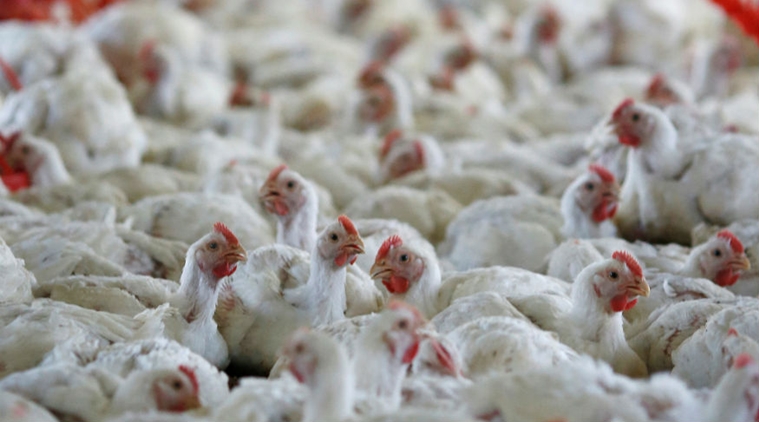
After a spell of high prices, poultry farmers are finding it increasingly difficult to sustain their businesses due to increasing input costs and low realisation. Wholesale prices of maize as well as soyabean, the two main raw ingredients that are part of the feed for the birds, is trading at exceptionally high rates. While maize rates are nearing the Rs 20 per kg mark, soyabean prices are around Rs 37-38 per kg. Last year, at this time, prices of both commodities were significantly lower, with maize selling at Rs 12-13 per kg, and soyabean prices in the same range.
In October last year, retail prices of 2-2.5 kg birds had abruptly shot up, in the wake of the drought and heat wave. Farm gate prices, the price at which poultry farmers sell their birds to retailers, had soared to Rs 100 per kg, an all-time high according to industry sources. Farm gate prices have now dropped to Rs 75-77 per kg, and given that the production cost is also pegged at Rs 75 per kg, such prices are not feasible for farmers. Poultry meat, meanwhile, is being sold at Rs 140-150 per kg. Its price had crossed the Rs 200 per kg-mark last year.
Raghavendra Joshi, chairman of Khadakeshwar Hatcheries, said the demand for poultry sees an increase in December, and then drops in January and February. “This trend continues in March, April and the exam season,” he said.
Prices tend to drop due to low demand and excess production, but this year, high input costs and the drought are adding to farmers’ troubles. “The industry had sought permission for import of duty-free maize. While the government had agreed for it in principle, legal hurdles have come in the way,” he said. The drought has also led to a reduction in sowing of the crops across the country. Commodity analyst Deepak Chavan said, “Prices of inputs, advent of the summer season as well as the drought will determine the price in the days to come,” he said. Chavan said the price could touch an all-time high if maize and soyabean continued to sell at such high prices.